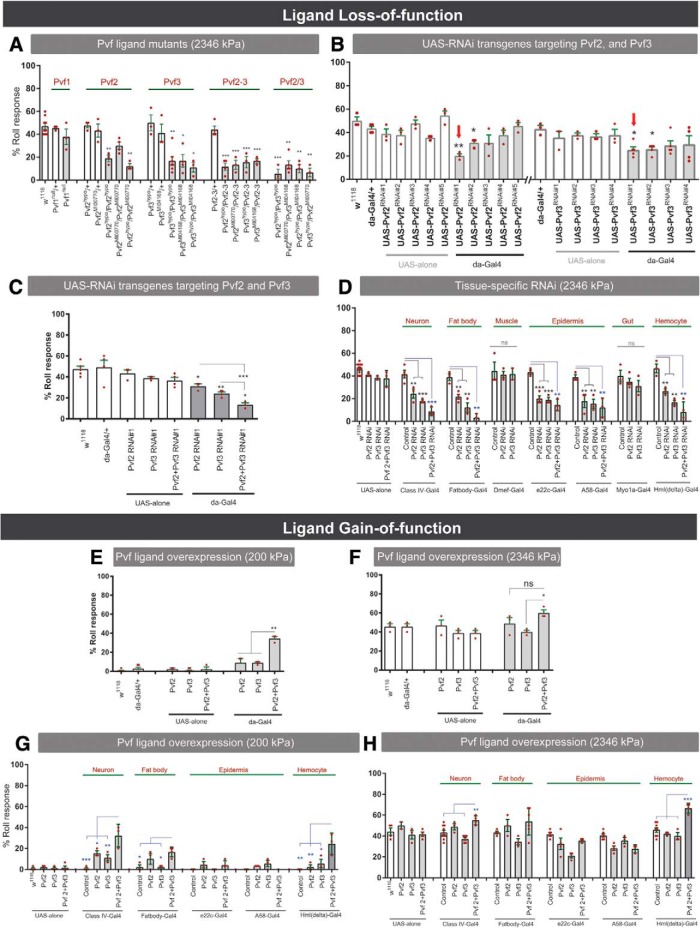Figure 3.
The Pvr-ligands Pvf2 and Pvf3 are required for mechanical nociception. A, Responses to noxious mechanical pressure (2346 kPa) of the indicated Pvf alleles and respective controls. B, Responses to noxious mechanical pressure (2346 kPa) of relevant controls and UAS-RNAi transgenes targeting either Pvf2 or Pvf3. Red arrows indicate the strongest RNAi transgenes. C, Responses to noxious mechanical pressure (2346 kPa) of relevant controls and UAS-RNAi transgenes targeting both Pvf2 and Pvf3 ligands in all tissues. D, Responses to noxious mechanical pressure (2346 kPa) of relevant controls and larvae expressing UAS-Pvf2RNAi#3 or UAS-Pvf3RNAi#4 in the indicated tissues. E, F, Response to non-noxious (200 kPa) (E) and noxious (2346 kPa) (F) mechanical pressure of relevant controls and larvae ubiquitously overexpressing Pvf2 and Pvf3. G, H, Behavioral responses of larvae overexpressing Pvf ligands in the indicated combinations and indicated tissues to 200 kPa (G) and 2346 kPa (H) mechanical probes. Controls: w1118 or tissue-specific Gal4 driver or UAS transgene alone. Data are mean ± SEM. Statistical analysis was performed using two-tailed unpaired t test, and one-way ANOVA with post hoc Tukey's test: *p < 0.05; **p < 0.01; ***p < 0.001, ns, not significant.

